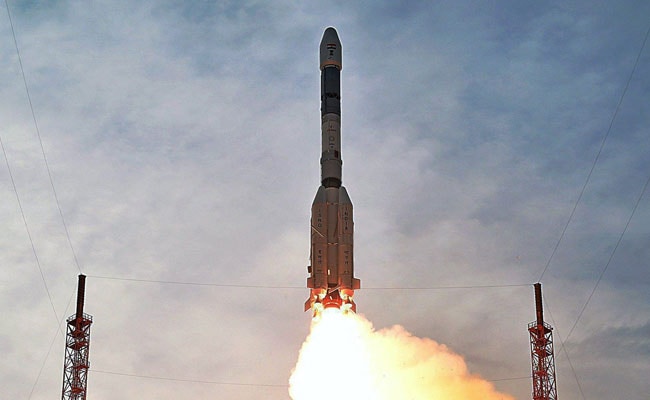NEW DELHI: If all goes well, India will be the first country in the developing world to have its very own telescope in space.
India's very own turbo-charged 'mini Hubble Telescope' is ready for lift off. If successful, the Indian space agency will join a very select club, since only the USA, European Union and Japan have similar capabilities. China lacks a space observatory.
India's first space observatory is ready and will be launched into space on the morning of September 28.
This satellite is really akin to the mythical 'third eye of Lord Shiva' as it can view the Cosmos in ways the human eye is not capable of observing.
India's very own turbo-charged 'mini Hubble Telescope' is ready for lift off. If successful, the Indian space agency will join a very select club, since only the USA, European Union and Japan have similar capabilities. China lacks a space observatory.
India's first space observatory is ready and will be launched into space on the morning of September 28.
This satellite is really akin to the mythical 'third eye of Lord Shiva' as it can view the Cosmos in ways the human eye is not capable of observing.
It will be used to study black holes and analyse how stars and galaxies are actually born and how they ultimately die.
This flight of the Polar Satellite Launch Vehicle (PSLV) is historic as, for the first time, American satellites are being launched by India. Till recently, the US had kept ISRO under sanctions and technology was being denied on a regular basis so much so that under pressure from USA, India was denied the critical cryogenic engine technology which pushed back Indian foray into deep space by two decades.
Now, these four small LEMUR satellites are being launched on a commercial basis for a San Francisco-based company.
India's low cost of launching made the Americans shun their attitude of untouchability that they had adopted towards ISRO.
The PSLV will also carry a Canadian and an Indonesian small earth observing satellite as a piggyback payload. This will be the 31st flight of the workhorse PSLV rocket, which has had 30 consecutive successful flights till date.
Called the AstroSat, this unique Indian satellite has been made by the Indian Space Research Organisation (ISRO) and it will be launched from the spaceport at Sriharikota in Andhra Pradesh using the most powerful version of the Polar Satellite Launch Vehicle (PSLV).
It will be placed almost 650 kilometres above the surface of the Earth and is expected to have a mission life of 5-years
This flight of the Polar Satellite Launch Vehicle (PSLV) is historic as, for the first time, American satellites are being launched by India. Till recently, the US had kept ISRO under sanctions and technology was being denied on a regular basis so much so that under pressure from USA, India was denied the critical cryogenic engine technology which pushed back Indian foray into deep space by two decades.
Now, these four small LEMUR satellites are being launched on a commercial basis for a San Francisco-based company.
India's low cost of launching made the Americans shun their attitude of untouchability that they had adopted towards ISRO.
The PSLV will also carry a Canadian and an Indonesian small earth observing satellite as a piggyback payload. This will be the 31st flight of the workhorse PSLV rocket, which has had 30 consecutive successful flights till date.
Called the AstroSat, this unique Indian satellite has been made by the Indian Space Research Organisation (ISRO) and it will be launched from the spaceport at Sriharikota in Andhra Pradesh using the most powerful version of the Polar Satellite Launch Vehicle (PSLV).
It will be placed almost 650 kilometres above the surface of the Earth and is expected to have a mission life of 5-years











: